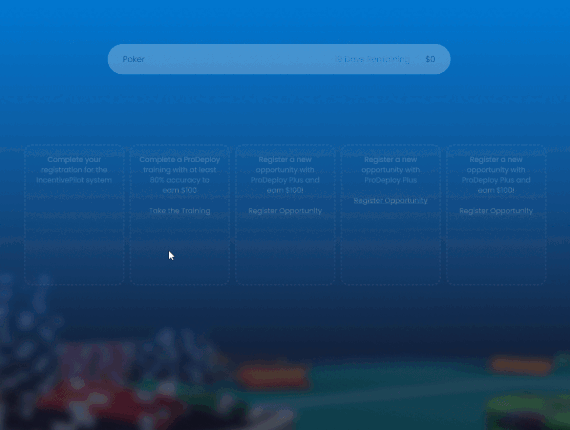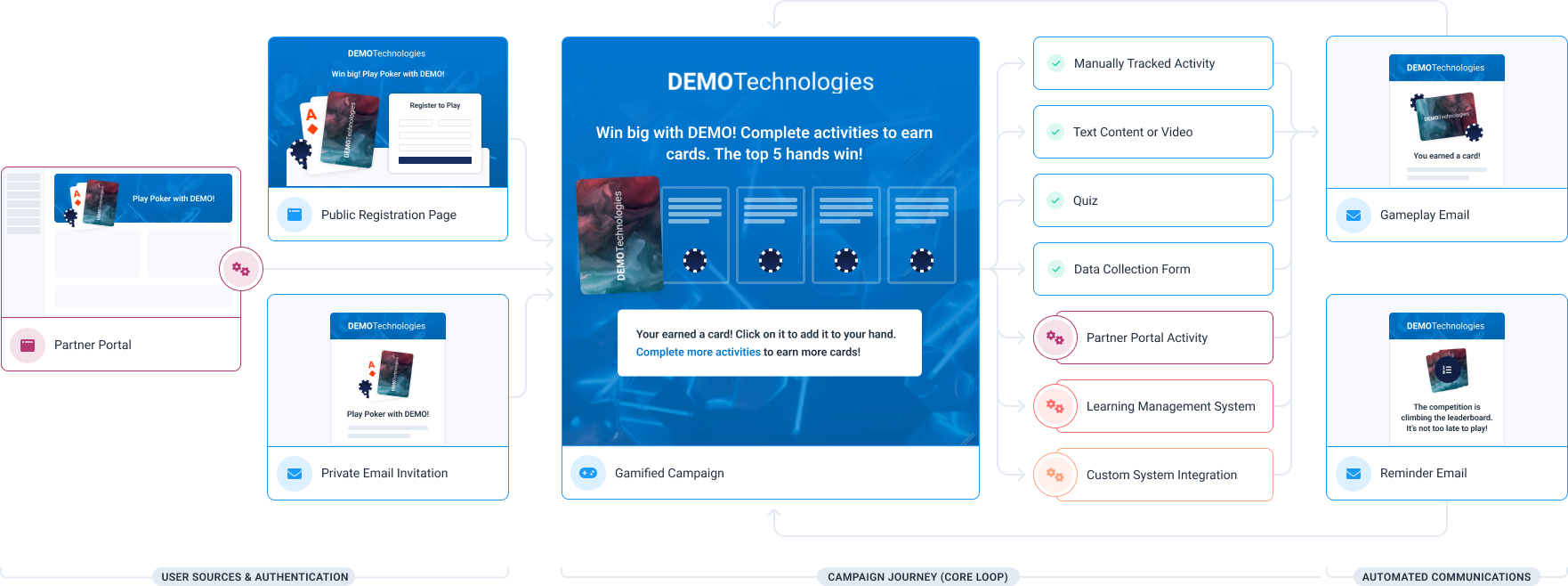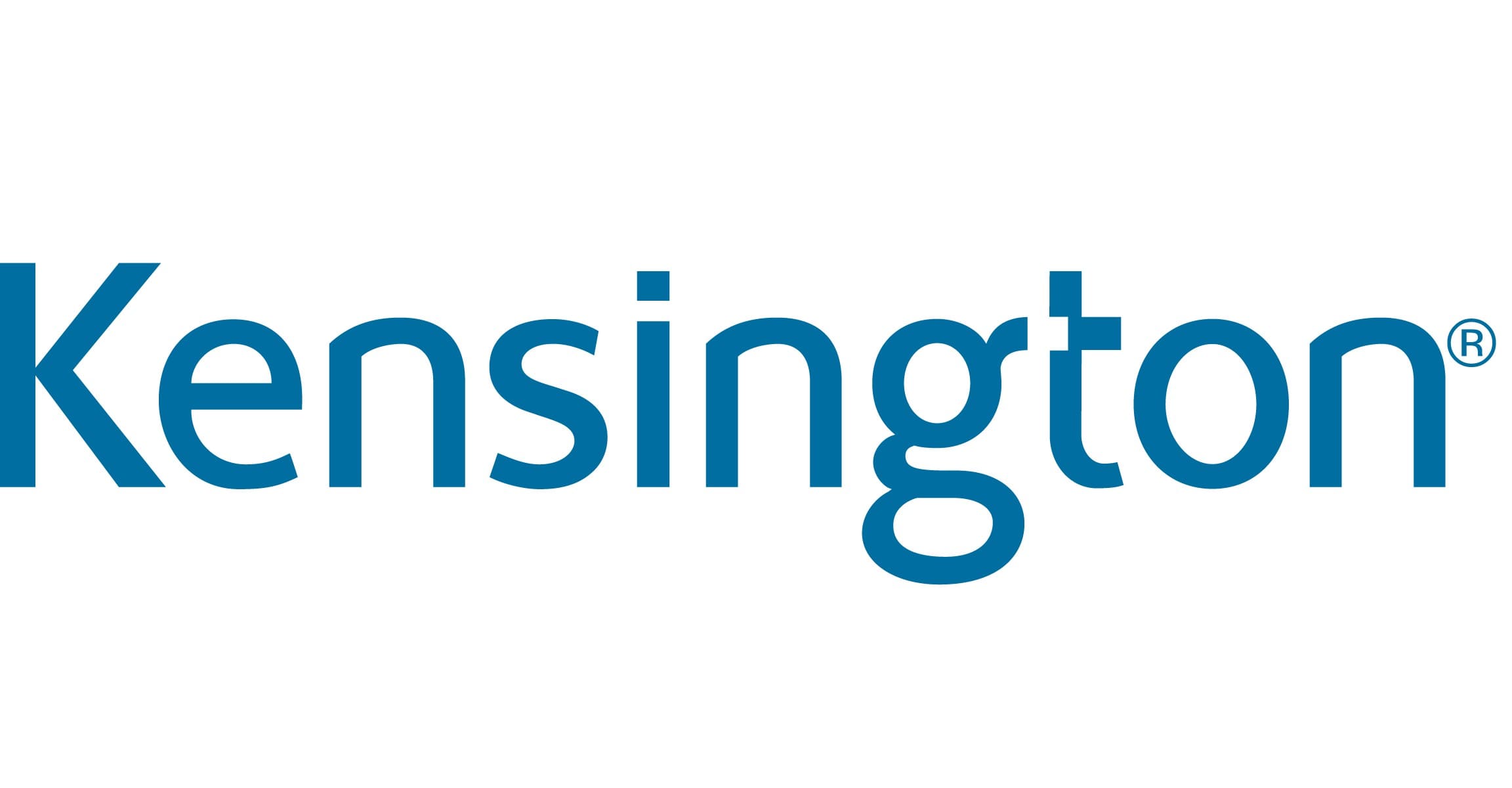Engaging partners doesn’t have to be hard, even at scale. Once you understand the basics of a good partner experience and the framework that drives results, it’s actually pretty easy. On this page you will get an overview of what we call The New Partner Engagement Paradigm.
Or as we like to say, because this strategy and gamification framework consistenty generates a return on investment (ROI) of over 1,000% for our customers, how to Gamify ROI.
Why do we need a new paradigm?
If you’re already satisfied with your partner engagement, you are in the tiny minority. You will commonly hear that for most partner programs 80% of partner revenue comes from 20% of the partner population. For many programs, the reality is that 99% of the revenue comes from fewer than 10% of the partners. The rest of the partner population is dormant or barely active. They are often called the longtail partners. Partners on paper, but that’s about it.
The revenue generating partners are often highly managed with deep, long established relationships. While many enterprise programs have thousands of partners, they fail to reach a critical level of engagement with the vast majority of the partner population. The reason is simple. It’s difficult to scale relationship-building, especially with the limited resources of the average channel team.
Since so many programs have the same low engagement problem, it’s considered normal. Low engagement and a long, long, longtail is the status quo. We tend to go with whatever is normal. We do the same things we've always done and get the same results we've always gotten.
Despite our beliefs about what is normal, the fact remains:
When the opportunity is big enough, you need to consider all options. That is what put us on the path to solving the partner engagement problem for good.
IncentivePilot customers have run hundreds of campaigns with thousands of partners and our strategy has generated over $500 Million in partner pipeline and revenue for channel leaders.
The truth is that you can activate, engage, and enable partners across the entire partner population. It's not magic and you don't need a miracle.
All you need is a desire to seize the biggest opportunity for your program today and a new paradigm that embraces the realities of the modern channel ecosystem.
Foundation 1. Understand your partners (users).
The core tenet of User Experience (UX) design is to understand your users. Who are they? What do they want? And most importantly, what do they expect?
Chances are your partners are tech-savy, they work hard, and they make a good living. What does that mean for you and your program technology?
It means that your partners probably use the world's leading consumer apps on a daily basis. They listen to music on Spotify. They order food on DoorDash or Postmates. They make big purchases in seconds on Amazon with just a couple of clicks.
They are conditioned to expect insanely good UX - UX that has been designed by experts with billions of dollars invested in optimization.
On top of that, they're busy. They're working on multiple deals at a time. They have thousands of products they can sell to their customers. They are in and out of email, messaging apps, partner portals, documents, and other systems all day, everyday.
It doesn't take much friction with anything for them to become frustrated, distracted, or bottlenecked. They simply don't have the time or bandwidth to problem solve. When they hit a roadblock, they have to move onto the next thing (probably thinking, "I'll come back later").
Despite this reality, partner communications and systems often suffer from bad UX. Emails are too wordy and include too much information. Partner portals are hard to navigate and offer users too many options.
Most partner teams don't have a background in UX. Even if they have the expertise, they are too strapped for time to optimize every single touchpoint in their program for their partners. A couple small points of friction end up comprimising the entire experience.
The first step of Gamifying ROI is embracing a culture of good user experience for your partners (more on this later).
Foundation 2. Create stimuli that stand out from the crowd.
Even if your UX is good, chances are you are not standing out from the crowd. And it's a big crowd. The channel ecosystem is saturated with technologies and partners have put their blinders on. With so many programs, partner portals, and emails competing for their attention, your partners have started to block out the noise. It takes something special (or at least different) to catch their attention.
Attention is earned in just a split second at a time. Most emails are ignored after the reader sees just a couple words or a banner image.
The goal of any stimulus should be to continue to engage the audience. Use each of your stimuli to build a path of action. For example:
- The goal of an image is to get a partner to read the headline.
- The goal of the headline is to get the partner to read the sub-headline.
- The goal of the sub-headline is to get the partner to read the copy.
- The goal of the copy is to get the partner to click the button.
- The goal of the button is to get the partner to click.
- And then the process continues after the button click...
When partners don't take action, it's because the stimuli are failing to lead them through an experience. Most program materials are simply not interesting enough to earn the attention of our busy partners in the middle of their workflow.
Here are some questions to ask yourself that can help get you started.
- Be honest: if you were your partner, would you read your emails?
- What do you think would earn a partners attention?
- What earns yours?
We'll build on this later. Hint: it's not as had as you think.
Foundation 3. Maximize your partner touchpoints.
Now you know you need a good user experience. You also know you need to stand out from the crowd. The final foundational piece of The New Paradigm are touchpoints. How often are you getting in front of partners? How many times have they seen your stimuli? How many touchpoints do you have with each partner for your latest initiative? The truth? Not enough.
Yes, you read that right. You need a lot of touchpoints with your partners before you start seeing results. That doesn't mean spamming them with the same message over and over. They will quickly adapt and start ignoring repeated messages very quickly.
But you do need to repeat yourself to get your message across. This is mostly because you need to catch your partners at a good time. We already know that they're busy. If you're asking them to take a 10 minute training, the first piece of the puzzle is catching them when they actually have 10 minutes. Odds are it's not gonna happen on the first try.
On top of that, we're usually asking a lot more of them than to watch a quick video. The more difficult the partner action, the more touchpoints required to drive the partner action.
To sum up the foundations of The New Partner Engagement Paradigm:
- You need a good user experience.
- You need to stand out from the crowd.
- You need to maximize your partner touchpoints (a lot).
Foundation 4. Make your touchpoints fun.
When you hear the word gamification, what do you think? Most channel marketers think about the points, badges, and leaderboards. While applying these game elements to work is technically gamification, it doesn't really make work more fun.
Would you enjoy folding laundry if I gave you points for each T-shirt? What if there was a leaderboard with your co-workers that showed who folded the most?
Competitive people may be more motivated but these solutions are not compelling enough to motivate action across the entire partner population.
Points, badges, and leaderboards can be effective gamification elements that provide additional partner touchpoints but they need to be combined and layered with other elements to create truly compelling experiences. Why do we play games? They're fun. If it isn't fun, it isn't a game.
Taking Action to Increase Partner Engagement
Now that you understand the foundations, you can make practical adjustments that will drive serious results. If your systems are easy to use, you create stimuli that stand out from the crowd, and you achieve the critical number of touchpoints with partners, you will see drastic increases in engagement that directly boost your KPIs.
The challenge that remains is that there are still a lot of variables to test and experiments to run. Most channel teams don't have the time or resources it takes to dig into each of these details until they are optimized for high performance.
The good news is there is a solution. Gamification (when it's done right) easily delivers on the foundational principles. Here's why games work great.
- A well designed game is simple and easy to understand.
- It is compelling enough to stand out from the crowd and drive initial partner action.
- There is enough variety in the experience to provide the critical touchpoints with partners over the course of a campaign, without spamming them.
Making Gamification Work
A well designed game is the perfect medium to check the Paradigm's foundational boxes. Let's dive into exactly how and why it works.
The first foundation of good UX is covered throughout the entire experience. Everything must be easy to use. Most importantly, it needs to be intuitive. Partners should be guided through every step of an experience with simple instructions. Nothing should take more than a few seconds to understand. The best user experiences find a perfect balance between giving users different options but making it clear which action is the best to take next. With a single path through an experience, users can put all their focus on taking the next critical step.
The next foundation of standing out from the crowd is achieved by the novelty of the game itself. The game doesn't have to be a new game. In fact, adapting tried and true games is the easiest way to create compelling stimuli that spark curiosty in partners. The novelty comes from the context. Since the status quo of the channel ecosystem is a boring sea of sameness, anything remotely interesting seems novel and will get attention. The sillier, weirder, or stupider, the better. As Kristine Stewart told me, "People love corny."
The final foundation of touchpoints comes naturally from the game itself. Instead of bombarding your partners with the same message over and over, you can relate your communications to the experience of the game. There are a variety of things for a partner to see. They can play the game, check out the leaderboard, talk trash to their peers, or complete another activity. The variety builds on the novelty and if everything is easy to use, you get more time in front of your partners.
Let's Play Poker!
Now we'll take a look at the foundations in practice. In this example, you'll see IncentivePilot's poker campaign. It all starts with promotion of the campaign. It's best to have multiple points of entry as well as multiple touchpoints.
Our simple promo plan includes the following (our customers get all of our templates):
- A marketing email that goes out to partners.
- A banner in the partner portal or somewhere else there is existing partner traffic.
- Social media posts.
- A personalized email to partners from Partner Account Managers.
For our poker campaign, a partner is rewarded with the first card of their poker hand when they register to play. This is the first hook in the experience. If you want to understand hooks and go deeper on UX theory, you should read Hooked: How to Build Habit-Forming Products by Nir Eyal.
This light promotion is enough to get a baseline audience into the gamified campaign. Once they are inside, the game will facilitate the follow on touchpoints that drive the bulk of the activity.
Driving Interaction with Details
When the user earns their first card, they are prompted to click on the card and flip it over. These elements of the experience are designed promote interaction with the partner user. The game could easily deal and reveal a card without any animation or input from the user. The animation and interactivity encourage a user to keep performing actions. It sends the subtle signal to the player that this is more than a static page. Check it out below.
Many users will move onto the next activity immediately. To continue to build momentum with the partner, it's best to use an easy activity. This will allow the partner succeed without much effort and reach another hook which will increase their investment in the experience. Some go-to activities that we reccomend are:
- Watch a quick video and take a quiz.
- Post on social media with a linked template.
- Sign up to attend a upcoming webinar.
Ideally, partners will continue to earn cards by completing the activities you need done. And many will. It's important to remember that even easy activities have to be completed at a good time.
A portion of partners will earn their first card and move onto the next thing on their calendar. That's fine. They'll still get the critical number of foundational touchpoints in the coming weeks.
Automating Touchpoints with Games
In order to drive additional activity over the course of the campaign, we'll need at least 12 touchpoints with each partner. Luckily for us, many of these touchpoints can be automated. Some are even done for us. Below is a list of touchpoints that are easily built into every single campaign.
- Ongoing promotional emails and social media posts that get new partners into the system and remind those who are already registered that the fun is only getting bigger and better.
- Personalized, automated reminders sent to participants.
- Leaderboard updates.
- Surprise or bonus prizes along the way.
- Organic conversation at partner organizations. Your campaigns are now so interesting, they grow on their own!
If you're not ready to use gamification to drive partner activity, the most important thing you can take away from The New Partner Engagement Paradigm is this diagram. If you understand the importance of touchpoints and design your experiences as loops, you will see an increase in partner engagement. Download it here.
The Role of Incentives (Hint: You're doing it wrong).
Incentives and spiffs are commonly used as a reward for getting something done. We tend to look at them as a transaction. This influences how we use them with our partners and it can get incredibly expensive when they're working well. That's ok with a good ROI. The problem is that they don't often work very well.
The New Partner Engagement Paradigm uses incentives differently. Incentives, prizes, and monetary rewards are hooks, not rewards. The data is clear. Campaigns that use traditional incentives perform exactly the same as campaigns without traditional incentives. As long as you get the critical number of touchpoints with partners, you will see increased engagement.
Using incentives as hooks, you get all the attention of a traditional spiff without the expense. When you understand that the power of incentives is in their ability to earn attention and drive touchpoints, you can use them more effectively.
You can reward participation. You can reward performance in the game. You can surprise and delight your partners with a gift.
Here are some highly effective examples using incentives as hooks:
- Raffle: Ten random poker players will be selected to win $100!
- Reward Game Performance: The top ten poker hands win $100!
- Reward Participation: Thanks for playing poker! Login this week and earn $25!
- Thank You/Bonus: Thank you for playing poker! Enjoy this $25 gift card!
- Reward Action: The first ten partners to complete the training win $100!
Have Fun and Get Serious Results
We didn't set out to create a gamification strategy or a partner engagement platform. We've arrived at these solutions organically as we helped our channel customers improve their day to day with powerful tools to manage programs at scale. It's taken years of experimentation to deeply understand the problem and engineer solutions that deliver results.
We so consistently increase partner engagement for our customers, we work completely on a pay on results basis. If you don't increase engagement by at least 20% in 90 days, we don't charge a penny. Schedule a Strategy Call to learn more.
More Data and Take-Aways
We have more actionable data to share. If you want to learn more, Schedule a Strategy Call and we'll fill you in on everything we know.
- Ideal campaign timeline for maximum engagement.
- The partner audiences that respond best to gamification (hint: you'll be surprised).
- A complete list of activities you can drive with gamification.
- How to handle support and questions from partners.
- The best ways to get started without a huge investment of time and money.
Leaders who've already Gamified ROI with IncentivePilot:
M'hamed Barradouane • Channel Marketing at Atlassian
“We launched the 'Space Invasion' campaign, and the results were nothing short of phenomenal. We saw a staggering 268% increase in total partner base logins. IncentivePilot transformed our partner engagement strategy. It not only boosted portal adoption but also fostered a more motivated and productive partner community.”
Claire L. • Marketing at a Fortune 100
“Just wow. Participating sellers generated an additional $69 million in only three weeks with IncentivePilot's Whodunnit campaign. It doesn't get easier or more effective than this. It's like engagement on autopilot.”
Chris P. • Datacenter Marketing at a Fortune 100
"I am proud to say that $93 million in pipeline is directly tied to the IncentivePilot campaign. This kind of direct impact on our bottom line is something that we could not have achieved without the help of IncentivePilot and their gamified plug-and-play campaigns."
Tayler Blanc • Channel Marketing at Kensington
“IncentivePilot took our channel engagement to the next level by giving us a unique way to engage with our partners resulting in key behavioral changes. Our PRM engagement more than doubled and we saw more trainings, sample requests, social media postings, and account mapping calls in as little as six weeks. Partners want to play games at work, it’s that simple.”
Robert H. • Marketing at a Fortune 100
"We really like the Incentive Pilot platform. It’s performed great and hits our lofty 10-to-1 ROI expectations. On top of that, it’s done wonders for our workflow and productivity. The support team is top-notch too and has been incredibly helpful and responsive to requests. We’re locked in and excited to expand the program to other sales divisions within our organization."
Erik E. • Sales Enablement at a Fortune 100
"I was having to procure and manage hundreds of rewards for various sales contests, on top of that support for the gift cards was turning into a nightmare. Incentive pilot has taken all the admin work out of these contests and given me back over 40 hours a month."
Victoria L. • Sales Enablement at a Fortune 100
"The IncentivePilot platform has allowed our team to run campaigns for 500+ sellers and distribute over $50,000 in rewards with ease. The efficiencies of the platform has replaced the workload of an entire team member and allowed us to focus on creativity and innovation within the contests."
Caryl S. • Channel Marketing at a Fortune 100
"These folks know their stuff and know how to deliver a fabulous product/end result. The entire partner and administrator experience was flawless. These guys are the best to work with - fun and professional - all rolled into one. Any future project that come my way, my first call will be to IncentivePilot. You just can’t go wrong with this team. A real gem and a tremendous partner to our organization."
Michelle M. • Channel Support at a Fortune 100
"Everyone loved participating - the partners got really into it! The campaign created a jovial environment that was really nice to experience. To top it off, the digital gift card redemptions do all the heavy lifting for the managers. It’s a real winner!"
Amy K. • Alliance Manager at a Fortune 100
"It’s been a joy working with IncentivePilot! They have such a fantastic breadth of knowledge on all things technical and are always able to come up with creative and custom solutions to solve the problem at hand. They’re responsive, on-time, and incredibly easy to work with. They’ve always exceeded my expectations."



















